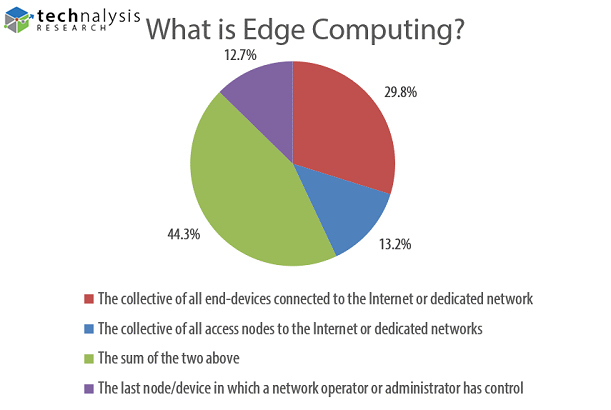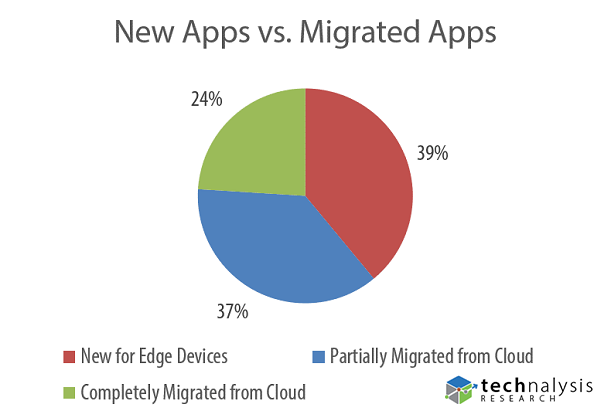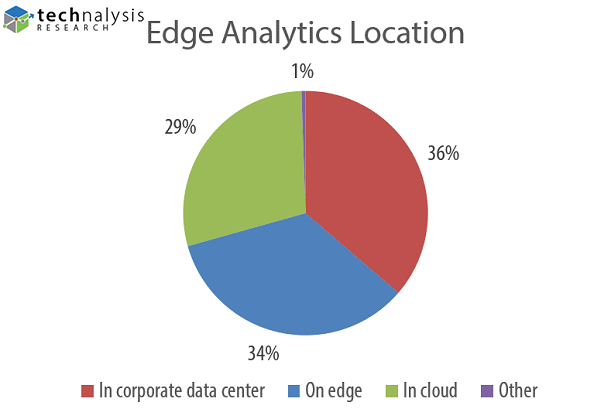| |
November 21, 2017
The Ridesharing Business Conundrum
November 14, 2017
Liberal Arts and Tech
November 7, 2017
Amazing Devices Enabled by Flexible Hybrid Electronics
October 31, 2017
Will the Future of Computing Emerge from the Fog?
October 24, 2017
Solving Multi-Device Dilemmas
October 17, 2017
Tech Inevitability Isn't Guaranteed
October 10, 2017
Edge Computing Could Weaken the Cloud
October 3, 2017
The Business Challenges of Artificial Intelligence
September 26, 2017
Microsoft Takes Computing to the Extremes
September 19, 2017
What is the Future of Upgrades?
September 12, 2017
It’s Time for Modern Digital Identities
September 5, 2017
The Autonomous Car Charade
August 29, 2017
The Golden Era of Notebooks
August 22, 2017
The Evolution of Smart Speakers
August 15, 2017
The Myth of General Purpose Wearables
August 8, 2017
IoT Connections Made Easy
August 1, 2017
Smarter Computing
July 25, 2017
The Value of Limits
July 18, 2017
Tech in the Heartland
June 27, 2017
Business Realities vs. Tech Dreams
June 20, 2017
The Power of Hidden Tech
June 13, 2017
Computing Evolves from Outside In to Inside Out
June 6, 2017
The Overlooked Surprises of Apple’s WWDC Keynote
May 30, 2017
Are AR and VR Only for Special Occasions?
May 23, 2017
The Digital Car
May 16, 2017
Digital Assistants Drive New Meta-Platform Battle
May 9, 2017
Getting Smart on Smart Speakers
May 5, 2017
Intel Opens High-Tech "Garage"
May 2, 2017
The Hidden Value of Analog
April 28, 2017
Google’s Waymo Starts Driving Passengers
April 25, 2017
The Robotic Future
April 21, 2017
Sony Debuts New Pro Camera
April 18, 2017
Should Apple Build a Car?
April 14, 2017
PC Market Outlook Improving
April 11, 2017
Little Data Analytics
April 7, 2017
Facebook Debuts Free Version of Workplace Collaboration Tool
April 4, 2017
Samsung Building a Platform Without an OS
March 31, 2017
Microsoft Announces Windows 10 Creators Update Release Date
March 28, 2017
Augmented Reality Finally Delivers on 3D Promise
March 24, 2017
Intel Creates AI Organization
March 21, 2017
Chip Magic
March 17, 2017
Microsoft Unveils Teams Chat App
March 14, 2017
Computing on the Edge
March 7, 2017
Cars Need Digital Safety Standards Too
February 28, 2017
The Messy Path to 5G
February 24, 2017
AMD Launches Ryzen CPU
February 21, 2017
Rethinking Wearable Computing
February 17, 2017
Samsung Heir Arrest Unlikely to Impact Sales
February 14, 2017
Modern Workplaces Still More Vision Than Reality
February 10, 2017
Lenovo Develops Energy-Efficient Soldering Technology
February 7, 2017
The Missing Map from Silicon Valley to Main Street
January 31, 2017
The Network vs. The Computer
January 27, 2017
Facebook Adds Support For FIDO Security Keys
January 24, 2017
Voice Drives New Software Paradigm
January 20, 2017
Tesla Cleared of Fault in NHTSA Crash Probe
January 17, 2017
Inside the Mind of a Hacker
January 13, 2017
PC Shipments Stumble but Turnaround is Closer
January 10, 2017
Takeaways from CES 2017
January 3, 2017
Top 10 Tech Predictions for 2017
|
|
|














 |
November 28, 2017
By Bob O'Donnell
Observing major computing trends is always an interesting exercise, but as core technologies mature and become more complex, that task can be very challenging. Such is the case with edge computing, a hot new area that—though primarily associated with business and even industrial computing—is a key enabler for both consumer and enterprise applications.
As I’ve discussed in the past, edge computing essentially takes hardware and/or software elements that have traditionally lived in the cloud or private corporate data centers, and brings them out to the “edge” of the network. In other words, it brings computing hardware and applications within physical proximity of where the action is—whether that action is monitoring the production line in a factory, tracking real-time traffic conditions in an autonomous vehicle, or speeding up the performance of an application that’s highly sensitive to variations in network bandwidth.
To make better sense of the evolution of edge computing, TECHnalysis Research engaged in an online survey of 600 US business professionals who are involved in their company’s edge computing efforts. The results of the survey were combined into a report—a summary version of which is available as a free download here—that highlights a number of key attributes about the fascinating world of edge computing.
The first question of the survey was designed to get a better sense of how people actually define edge computing. Even though the concept has been around for a while, there still isn’t solid agreement (nor understanding) on what exactly it is. The top two prevailing schools of thought lean towards either traditional endpoint devices, such as PCs, smartphones, etc., or towards access devices, such as gateways, routers, or even small servers. There is a bit of a bias towards endpoints, but it turns out the largest group of people think it’s a combination of the two, which makes the most sense. Figure 1 shows the results.
Fig. 1

Much of the attention around edge computing focuses on the new kinds of capabilities that it can enable because of the more distributed computing environment it demands. While that’s certainly justified, one of the more surprising results from the study is that more work on the edge has migrated there from the cloud—either fully or partially. In fact, it’s approximately a 60/40 split between migrated cloud apps and apps that are built new for the edge, as Figure 2 illustrates.
Fig. 2

What this means is that companies are in the process of evolving their computing workloads, and are transitioning some of them away from the cloud and towards the edge. Viewed in this light, some current iterations of edge computing could be seen as transitional, with more advanced edge-specific applications and implementations yet to come.
While the range of different applications being run on the edge is enormous, one relatively consistent characteristic for all of them is leveraging analytics capabilities. Most edge applications analyze and take actions on datasets such as the real-time data coming from sensors, or incoming network or device usage data. The goal is to leverage that data to make the processes or applications in their organizations run more efficiently. In fact, improving efficiency is the most popular goal for all edge computing projects, followed by increasing security, and then reducing cost.
Despite the similarity of intent, however, the means and location by which this analytics work is done varies tremendously, emphasizing the still evolving nature of this relatively new computing architecture. As Figure 3 highlights, for example, more edge computing analytics is done in the data center than anywhere else. Doing analytics on the edge and in the cloud is still quite popular, however, and it’s likely that, as computing capabilities increase on the edge, we’ll see more analytics work migrate there.
Fig. 3

The possibilities for edge computing are enormous, and it’s clear that companies are just starting to scratch the surface of its full potential. Part of the reason that progress towards broader and more advanced edge computing efforts is taking a while is that it’s also a very complicated topic. In fact, the technical and implementation complexities of edge computing are two of the top barriers cited by survey respondents.
Nevertheless, there are some intriguing possibilities for collaboration both within the tech industry and organizations deploying the technology that edge computing is uniquely positioned to help drive forward. By enabling these new partnerships and technology combinations, edge computing appears destined to be a critical factor in the tech industry for some time to come.
Here's a link to the column: https://techpinions.com/making-sense-of-edge-computing/51736
(For a free downloadable link to summarized version of the report, you can click here.)
Bob O’Donnell is the president and chief analyst of TECHnalysis Research, LLC a market research firm that provides strategic consulting and market research services to the technology industry and professional financial community. You can follow him on Twitter @bobodtech.
Podcasts
Leveraging more than 10 years of award-winning, professional radio experience, TECHnalysis Research participates in a video-based podcast called Everything Technology.
LEARN MORE |
|
Research Offerings
TECHnalysis Research offers a wide range of research deliverables that you can read about here.
READ MORE |
|